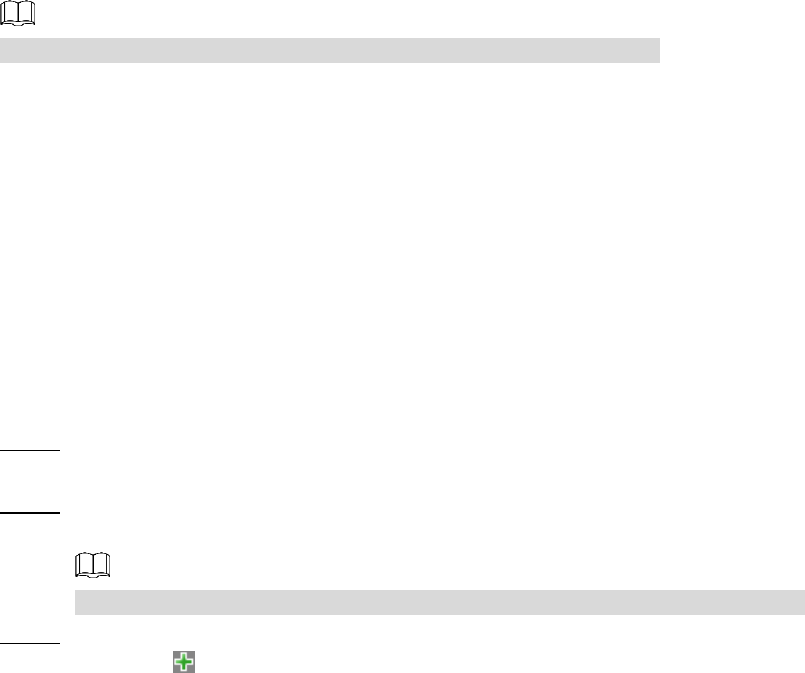User's Manual
Table Of Contents
- Cybersecurity Recommendations
- Regulatory Information
- Foreword
- 1 Product Introduction
- 2 Basic Settings
- 3 Daily Operation
- 3.1 Live
- 3.2 PTZ
- 3.2.1 Bullet Camera
- 3.2.2 Dome Camera
- 3.2.2.1 Configuring Protocol
- 3.2.2.2 Configuring PTZ Functions
- 3.2.2.2.1 Configuring Preset
- 3.2.2.2.2 Configuring Tour
- 3.2.2.2.3 Configuring Scan
- 3.2.2.2.4 Configuring Pattern
- 3.2.2.2.5 Configuring Pan
- 3.2.2.2.6 Configuring PTZ Speed
- 3.2.2.2.7 Configuring Idle Motion
- 3.2.2.2.8 Configuring Power Up
- 3.2.2.2.9 Configuring Time Task
- 3.2.2.2.10 Restarting PTZ Manually
- 3.2.2.2.11 Restoring PTZ to the Default Settings
- 3.2.2.3 Operating PTZ
- 3.2.2.4 Configuring Preset Backup
- 3.3 Playback
- 3.4 Reports
- 3.5 Alarm
- 4 Setting
- 4.1 Configuring Camera
- 4.1.1 Configuring Lens
- 4.1.2 Configuring Video Parameters
- 4.1.3 Configuring Audio Parameters
- 4.2 Configuring Network
- 4.3 Peripheral
- 4.4 Smart Thermal
- 4.5 Event
- 4.6 Temperature Measuring Settings
- 4.7 Storage Management
- 4.8 System Management
- 4.1 Configuring Camera
- 5 System Maintenance
- 6 Additional Accessing Methods

Setting 87
The pixel of the target should be no less than 10×10; the pixel of abandoned object should
be no less than 15×15(CIF image); the width and height of the target should be no more
than 1/3 that of the image; it is recommended that the height of the target should be set to
10% of the image height.
The brightness difference of the target and the background should be no less than 10 gray
levels.
The target should be continuously present in the image for no less than 2 seconds, and the
moving distance should be larger its width and no less than 15 pixels (CIF image) at the
same time.
Try to reduce the scene complexity as much as condition allowed; it is not recommended
to use Intelligence Behavior Analysis in scenes with intensive targets, changing lighting
conditions or small difference between target temperature and scene temperature.
Try to avoid the following scenes: scenes with reflective surfaces such as glass, bright
ground or water; scenes that disturbed by tree branches, shadows or winged insects;
scenes that against light or under direct light exposure. Control image proportion of objects
that are with high relative ambient temperature.
4.4.2.2 Configuring Intelligent Rules
After enabling smart plan, you can set IVS (intelligent rules) covering tripwire, intrusion,
abandoned object and missing object.
Preset spots that have been endowed with smart plan represent green.
4.4.2.2.1 Configuring Tripwire
When the target crosses the warning line toward the direction, an alarm is triggered.
Preparation
You have set smart plan of presets or channels. See "4.4.1 Configuring Smart Plan" for detailed
operations.
Procedure
Select Setting > Smart Thermal > IVS > IVS. Step 1
The IVS interface is displayed.
Select a preset spot. Step 2
The camera turns to the spot.
This step is required only when preset spot function is carried on this interface.
Set up tripwire rules. Step 3
1) Click and then double-click the rule you have just added to set up its name.
Select Tripwire as the type. See Figure 4-43.










